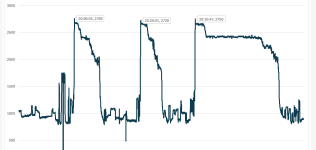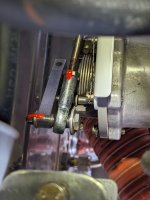This is timely because i've been wondering about doing the adjustment. On a WW 200RV there is nothing in the manual. I wondered if the WW factory just sets it right on a test stand and it doesn't need to be done. I had no idea how to adjust it. So, I appreciate the good pictures and description for the 200RV shown in this thread.
I don't get any surge on take-off, it comes right to 2700 and stays there. So I might be adjusted right already. But I do get substantial braking at idle with the prop, I fly downwind at 2200 rpm and abeam the numbers reduce to 1650 rpm, and that gives a really steep glide. So I think I'll do this test next fall. A shallower glide would be a good thing, especially with the Hartzell governor that won't control below 1500 rpm, so in case of power loss, I can't make the pitch very coarse to improve glide.








